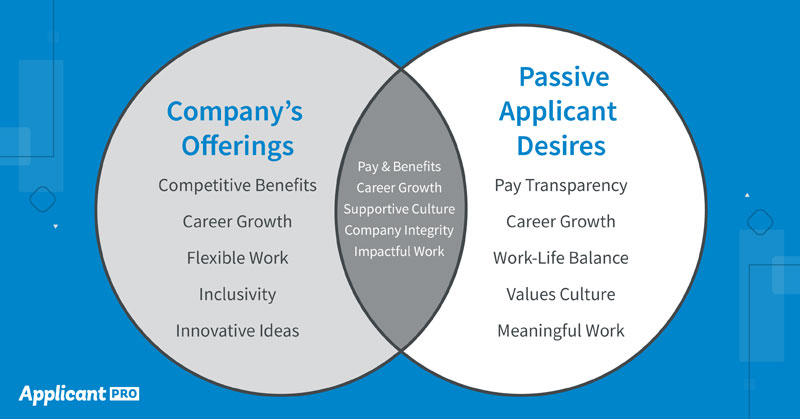

What Human Resources Can Learn From Internet Marketers
Change is all around us, no matter who you are or what profession you are in. Our lives are constantly changing as technology gives us the ability to do things that we never could have even imagined. Recently I was on an airplane headed to an SHRM conference for a speaking engagement. It’s amazing how just a few years time has changed something that we have taken for granted. Sure, the plane is the same and the trip still took about the same amount of time it would have taken 5 or 10 years ago. But who would have imagined 5 to 10 years ago that I would be sitting on a plane at 30,000 feet, watching satellite tv, surfing the web on my laptop, answering emails, and having 5 different instant message conversations with my employees back at the office. The only thing missing is the ability to make cell phone calls, but I’m not sure anyone wants to open up that can of worms.
To be truly successful, we must learn to step outside of our proverbial “box”
As technology changes around us, we are forced to change as well, or risk being left behind. We can choose to fight against it at all cost, or try to adapt our old ways to the new technology. But to be truly successful, we must learn to step outside of our proverbial “box” and completely change our perspective of what is possible and what we should be doing.
The majority of HR Professionals that I run in to are approaching the change that has been brought to their profession by the Internet in one of 2 ways. They are either fighting the change, or simply taking their old habits and ways of doing things, and slowly trying to adjust them to technology. Few HR managers have truly changed their entire frame of reference and embraced the changes brought about because of the Internet.
Get More Applicants from Job Boards
Don't post and pray. Get this exclusive FREE cheat sheet and take active steps to dramatically increase the results you get from your job board posts.
My background is in the highly competitive world of Internet marketing. It is a world that is generally dominated by the person who is the best at adapting to new things, and constantly seeks to understand and improve their processes. Unfortunately, the average HR manager is years behind the Internet marketing professional when it comes to their use of the Internet. This is especially true of small and mid-sized employers. Some may reason that this is because marketers have bigger budgets. Others may say it is because they don’t have to comply with the government rules and regulations. Honestly, I find that it is generally because of risk and fear. Fear that it will be too difficult and costly, and the risk that if it doesn’t work right, they will lose their jobs. And of course, the final issue that compounds the fear and risk is the fact that most HR professionals are not comfortable adopting new technology.
Generating a leads is not the end of the process”
The sad thing is that completely changing one’s perspective, and allowing the Internet to transform your hiring process, is not hard, risky, or costly, even for the smallest employer. Instead of focusing on your role, or looking to see how other HR professionals might be adjusting their processes, simply take a few minutes to look outside your box at the world of Internet marketing, and then take their ideas and concepts and convert them into HR ideas and processes. To make this easier, I’m going to outline this process for you through a series of blog posts.
We will start with the process that Internet marketers follow to attract new customers. You might be wondering what this has to do with hiring, but as someone with years of Internet marketing experience, combined with years helping small and mid-sized employers with their hiring, I can tell you that these two processes are almost identical.
Here is the step-by-step process that web marketers go through to find new customers:
It is vital to ask questions that will let the company know which leads should be contacted first
Step 1:
Marketers spend an immense amount of time studying their target customer. They are looking to know their wants and needs, as well as to understand their online habits. By “knowing” their target customer, they are better able to write advertisements and choose places to advertise that are most likely to generate the most qualified leads for their business.
Step 2:
Marketers look for websites or advertising mediums that will bring visitors to their company website. The focus is not just to generate as many visitors as possible, but to focus on qualified people who are most likely to become paying customers.
Step 3:
Once visitors land on a company’s website, marketers must focus on getting those visitors to do what they want them to do. For a website that sells services to businesses this would mean getting the visitor to fill out a lead form, but it might also include watching an informational video or signing up for a company newsletter. This is called a “conversion” because we “convert” the casual visitor into a lead or prospect.
Step 4:
Special attention is paid to asking the right questions when someone fills out an online lead form. The goal is to be able to screen or qualify the leads that come in. Yes, even in marketing, not all leads are great leads, so it is vital to ask questions that will let the company know which leads should be contacted first.
Step 5:
Generating a leads is not the end of the process. Web-based software, called a contact management system, is used to track the leads through the entire sales process. This includes tracking the status, source, sales notes, as well as the final result of the lead.
Step 6:
Because Internet marketers spend a significant amount of money, management expects them to report on where that money is being used, and which sources are generating the best leads. These reports, or analytics, might include traffic reports, source reports, time to close reports, as well as reasons why leads didn’t close.
Step 7:
These steps are not a one-time thing, but instead repeated and re-visited over and over again using the information that is reported on to look for ways to improve each step in the process.
Take a few minutes to look outside your box at the world of Internet marketing, and then take their ideas and concepts and convert them into HR ideas and processes”
Now, lets take these 7 steps and translate them into the hiring process for the average employer.
Step 1:
Your target customers are job seekers, and to understand them you must study not just the activities of job seekers, but also what makes your top performing employees tick. Why do they want to work for your company, what will draw them to your position, and most importantly, why will they accept your job offer and stay with your company for an extended period of time. You shouldn’t write a job board ad without first spending some time to fully understand who it is you want to read and respond to that ad.
Step 2:
Your advertising mediums include not just the standard job boards, but also your company careers site, job aggregators like indeed.com, search engines, social media, and even referrals from employees and recruiters. You must learn how each of these different mediums work, and then write specific ads to drive as many job seekers as possible back to your company careers website.
Step 3:
As job seekers land on your careers website, your goal is to convert them into job applicants. The best employers will look for other ways to convert job seekers into “contacts” if there is not a current job opening available. This might include a job alert email form or even pushing the job seeker to follow the company’s facebook or twitter page in order to build up a following to send new job postings to in the future.
Step 4:
Web-based employment applications come in all shapes and sizes based on the needs of the employer. Your focus should be to ensure that you collect enough information to quickly screen out those applicants who don’t meet your minimum qualifications for the job, without making it so difficult and time consuming to apply that you scare off qualified job seekers.
Step 5:
Having a system in place that tracks each applicant who applies through the entire hiring process is vital. Even a small company that only hires a few times a year can greatly benefit from having an applicant tracking system in place to organize and track their process. This system should include tracking the date and source of each applicant, their current status in the hiring process, manager notes, as well as the final disposition of each candidate.
Allow the HR team to study what is happening and to make adjustments the next time they post a job
Step 6:
HR spends a significant amount of time and money sourcing job seekers, and management should be provided with timely and accurate reports that show them where that money is being used, which sources are generating the best job seekers, and other vital information about the process. More importantly, many companies have compliance requirements that dictate specific types of reports that they must provide for eeo, affirmative action, ofccp, etc. These reports, or analytics, might include career site traffic reports, source reports, time to fill/hire reports, as well as applicant log reports.
Step 7:
Finally, the long-term value in having analytics and reports is to allow the HR team to study what is happening and to make adjustments the next time they post a job. Improving your hiring process is almost impossible if you have no way to track where you came from or where you are going.
Using this framework will allow you to dig deeper into the specific tactics used by Internet Marketers at each step in the process, and then adopt those tactics in your own hiring process. Upcoming blog posts will focus on looking more in-depth at each of the steps outlined above for specific examples and ideas that you can use to improve your company’s hiring.
For more information about items mentioned in this article, contact us

Get More Applicants from Job Boards
Download this exclusive guide to improve applicant flow from job boards.
Share this article
Related Articles

Unlocking the Hidden Talent Pool: How to Attract Passive Candidates
Boost your hiring strategy! Learn how to attract passive candidates with ApplicantPro's expert tips, insights, and stats for a stronger talent pipeline.

Building Your Employer Brand: Why it Matters and How to Do it Right
Build a strong employer brand to attract top talent, reduce turnover, and boost morale. Learn actionable steps to create an authentic, compelling company reputation.

What is an ApplicantPro Market Analysis?
Discover how our Market Analysis can help you stand out from the competition and attract top talent. From competitor pay reviews to job-seeker personas, our Recruitment Marketing experts provide actionable insights to improve your hiring process.